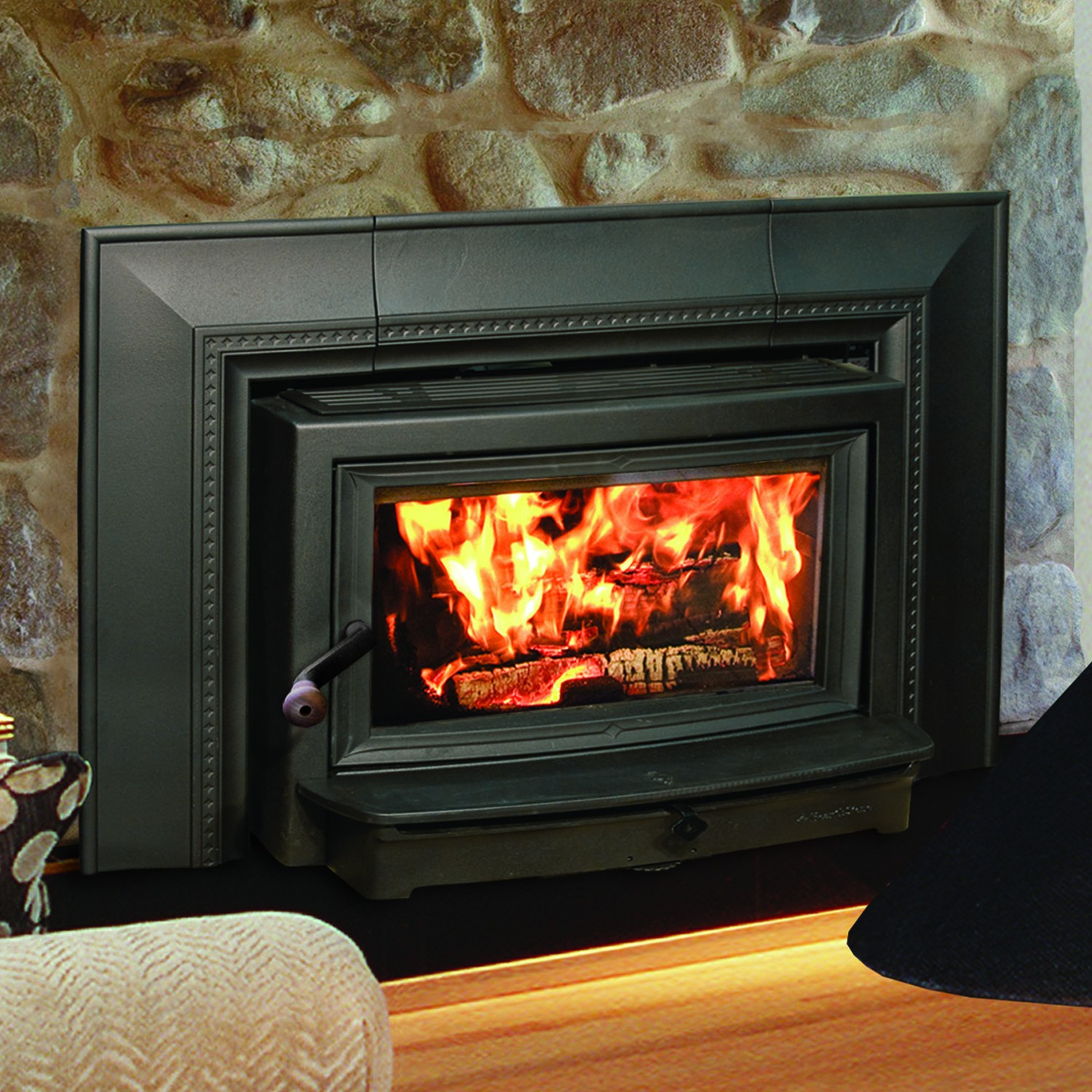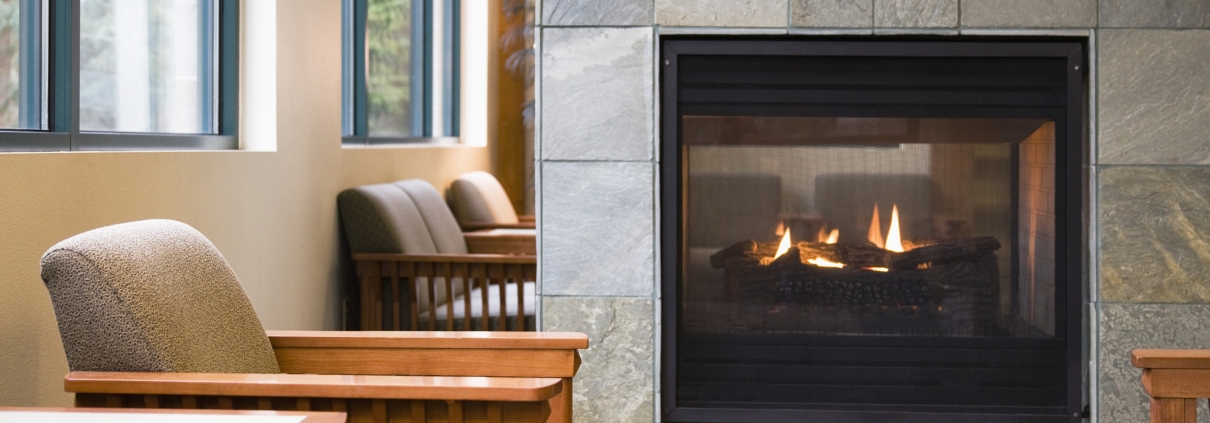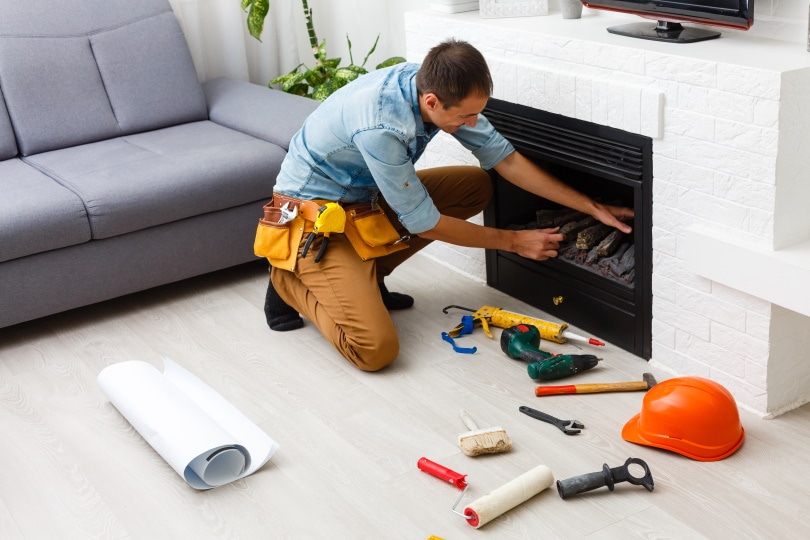Fireplace Insert Ratings
Fireplace inserts are a popular home improvement option for enhancing the efficiency and aesthetic appeal of traditional fireplaces. These inserts are essentially self-contained units that fit into existing fireplace openings, transforming inefficient, open hearths into highly efficient heat sources. Available in various fuel types—such as wood, gas, and electric—fireplace inserts provide a versatile solution for homeowners looking to improve their home heating. Understanding fireplace insert ratings is crucial for selecting the right model, as these ratings offer valuable insights into the performance, efficiency, and safety of the units.

Understanding Efficiency Ratings
Efficiency ratings are a key aspect of fireplace insert ratings, indicating how effectively the unit converts fuel into usable heat. These ratings are usually expressed as a percentage, with higher percentages representing greater efficiency. For example, a wood-burning insert with an efficiency rating of 75% converts 75% of the energy in the wood into heat for the home. In contrast, traditional open fireplaces typically have efficiency ratings of around 10-20%, making inserts a significant improvement. Gas and electric inserts often boast even higher efficiency ratings, sometimes exceeding 90%. These ratings help consumers identify the most cost-effective and environmentally friendly options for their homes.

Emissions and Environmental Impact
Another critical component of fireplace insert ratings is emissions, which measure the amount of pollutants the insert releases into the environment. This is particularly important for wood-burning inserts, as they can produce significant amounts of smoke and particulate matter. The Environmental Protection Agency (EPA) certifies wood-burning inserts that meet stringent emissions standards, making it easier for consumers to find environmentally responsible options. Lower emissions not only contribute to better air quality but also comply with local regulations aimed at reducing pollution. Gas and electric inserts generally have lower emissions than wood-burning models, making them attractive choices for environmentally conscious homeowners.

Safety Ratings and Certifications
Safety is a paramount concern when choosing a fireplace insert, and safety ratings provide essential information about the unit’s compliance with industry standards. These ratings often include certifications from recognized organizations such as Underwriters Laboratories (UL) or the Canadian Standards Association (CSA). Safety features to look for in fireplace inserts include automatic shut-off mechanisms, thermal overload protection, and proper venting systems. Certified units are rigorously tested to ensure they meet high safety standards, giving homeowners peace of mind when installing and operating their inserts. Reading reviews and ratings can help identify models with the best safety features.

Consumer Reviews and Satisfaction
Consumer reviews play a significant role in fireplace insert ratings, offering firsthand insights into the performance and reliability of different models. These reviews can provide valuable information on various aspects, such as ease of installation, maintenance requirements, and overall user satisfaction. Highly rated inserts often receive praise for their heating efficiency, aesthetic appeal, and durability. Conversely, lower-rated models may have recurring issues such as difficult installation processes, inadequate heat output, or frequent maintenance problems. By considering consumer reviews, prospective buyers can make informed decisions and select inserts that have proven successful in real-world applications.

Brand Reputation and Warranty
The reputation of the manufacturer and the warranty offered on fireplace inserts are also important factors in their overall ratings. Established brands with a history of producing high-quality inserts tend to receive better ratings due to their reliability and customer support. Warranties provide an added layer of assurance, covering repairs or replacements in case of defects or malfunctions. A comprehensive warranty can significantly enhance the value of a fireplace insert, making it a more attractive investment. Prospective buyers should consider both brand reputation and warranty terms when evaluating fireplace insert ratings to ensure they choose a dependable and well-supported product.

Making an Informed Choice
Selecting the right fireplace insert involves careful consideration of various ratings and factors, including efficiency, emissions, safety, consumer reviews, and brand reputation. Efficiency ratings help identify cost-effective and environmentally friendly models, while emissions ratings ensure compliance with environmental standards. Safety certifications provide peace of mind, and consumer reviews offer practical insights into real-world performance. Additionally, choosing inserts from reputable brands with strong warranties can enhance the overall value and reliability of the purchase. By thoroughly evaluating these aspects, homeowners can make informed choices and select fireplace inserts that meet their heating needs, aesthetic preferences, and budget requirements.

What is the average cost of a Gas Fireplace Insert? (A Complete Guide)

How Much Does it Cost to Install a Gas Fireplace Insert?

Related Posts:
- Fireplace Insert Cover
- Dual Fuel Fireplace Insert
- Wall Insert Fireplace
- Electric Fire Inserts For Fireplaces
- How Does a Fireplace Insert Work
- Wood Burning Fireplace Insert Accessories
- Wood Burning Fireplace Insert Thermometer
- Wood Fireplace Insert Grates
- Fireplace Insert Replacement Panels
- Electric Fireplace Insert Reviews
Fireplace inserts are a popular option for homeowners looking to increase the efficiency and aesthetics of their existing fireplace. With a wide range of options available on the market, it can be overwhelming to choose the best fireplace insert for your home. Fireplace insert ratings can help narrow down the choices and ensure you are making an informed decision. In this guide, we will discuss the benefits, pros and cons of fireplace inserts, as well as common mistakes to avoid and frequently asked questions.
Benefits of Fireplace Inserts
1. Improved Efficiency: One of the main benefits of a fireplace insert is its ability to improve the efficiency of your existing fireplace. Traditional fireplaces can lose a significant amount of heat through the chimney, but a fireplace insert is designed to contain and radiate heat more effectively.
2. Cost Savings: By increasing the efficiency of your fireplace, a fireplace insert can help lower your heating costs by reducing the amount of energy needed to heat your home.
3. Increased Safety: Fireplace inserts are sealed units that reduce the risk of sparks or embers escaping from the firebox, making them a safer option for households with children or pets.
4. Aesthetic Appeal: In addition to their functional benefits, fireplace inserts come in a variety of styles and finishes, allowing you to enhance the look of your living space.
Pros and Cons of Fireplace Inserts
1. Pros:
– Energy Efficiency: Fireplace inserts are designed to maximize heat output while minimizing heat loss, making them a more energy-efficient option compared to traditional fireplaces.
– Easy Installation: Installing a fireplace insert is typically easier and less expensive than renovating or replacing an entire fireplace.
– Cleaner Burning: Fireplace inserts are engineered to burn fuel more cleanly and efficiently, resulting in less pollution and emissions.
– Versatility: Fireplace inserts come in various sizes and styles to suit different home decor preferences and heating needs.
2. Cons:
– Upfront Cost: The initial cost of purchasing and installing a fireplace insert can be higher than other heating options.
– Limited Fuel Options: Depending on the type of fireplace insert you choose, you may be limited to using specific types of fuel such as wood pellets or gas.
– Maintenance Requirements: Regular maintenance is necessary to ensure optimal performance and safety of your fireplace insert, including cleaning the chimney and inspecting for any signs of wear or damage.
Common Mistakes to Avoid
1. Choosing the Wrong Size: It is essential to measure your existing fireplace accurately before purchasing a fireplace insert to ensure it fits properly and functions efficiently.
2. Ignoring Installation Guidelines: Improper installation can lead to safety hazards and decreased performance. Always follow manufacturer instructions or hire a professional installer.
3. Neglecting Maintenance: Regular cleaning and maintenance are crucial for prolonging the lifespan and efficiency of your fireplace insert. Ignoring these tasks can lead to malfunctions or safety issues.
4. Not Considering Ventilation Needs: Depending on the type of fuel used in your fireplace insert, proper ventilation is essential to prevent carbon monoxide buildup and ensure safe operation.
1. How do I know what size fireplace insert I need for my existing fireplace?
To determine the appropriate size for your fireplace insert, measure the dimensions of your existing firebox opening (height, width, depth) and consult with a professional installer or sales representative for guidance.
2. Can I use my existing chimney with a new fireplace insert?
In most cases, you can use your existing chimney with a new fireplace insert; however, it is important to have it inspected by a professional to ensure it meets safety standards and is compatible with the type of fuel used in the insert.
3. What type of fuel is best for a fireplace insert?
The best type of fuel for your fireplace insert depends on your heating needs, budget, and availability. Common options include wood pellets, gas, propane, or electric.
4. How often should I clean my fireplace insert?
Regular cleaning is recommended to maintain optimal performance and safety of your fireplace insert. Depending on usage, it is advised to clean at least once per year or more frequently if heavily used.
5. Do I need professional installation for a fireplace insert?
While some homeowners may be able to install a fireplace insert themselves, it is recommended that you hire a professional installer to ensure proper setup, ventilation, and compliance with local building codes for safety reasons.
Fireplace inserts offer many benefits such as improved efficiency, cost savings, increased safety, and aesthetic appeal. While there are pros and cons to consider, avoiding common mistakes and seeking professional assistance can help you make the most of your fireplace insert investment. By understanding the different types of fireplace inserts, their maintenance requirements, and fuel options available, you can select the best option for your home heating needs. Remember to follow manufacturer instructions and consult with experts to ensure a safe and efficient fireplace insert installation.
Fireplace inserts can be a great addition to any home, providing both functionality and aesthetic appeal. By carefully considering the benefits, pros and cons, common mistakes to avoid, and frequently asked questions outlined in this guide, you can make an informed decision when choosing a fireplace insert for your home. Whether you are looking to improve efficiency, lower heating costs, or enhance the look of your living space, a fireplace insert can be a valuable investment that adds warmth and comfort to your home. Remember to prioritize safety, proper installation, and regular maintenance to ensure optimal performance and enjoyment of your fireplace insert for years to come.
Fireplace inserts offer many benefits such as improved efficiency, cost savings, increased safety, and aesthetic appeal. While there are pros and cons to consider, avoiding common mistakes and seeking professional assistance can help you make the most of your fireplace insert investment. By understanding the different types of fireplace inserts, their maintenance requirements, and fuel options available, you can select the best option for your home heating needs. Remember to follow manufacturer instructions and consult with experts to ensure a safe and efficient fireplace insert installation.
Fireplace inserts can be a great addition to any home, providing both functionality and aesthetic appeal. By carefully considering the benefits, pros and cons, common mistakes to avoid, and frequently asked questions outlined in this guide, you can make an informed decision when choosing a fireplace insert for your home. Whether you are looking to improve efficiency, lower heating costs, or enhance the look of your living space, a fireplace insert can be a valuable investment that adds warmth and comfort to your home. Remember to prioritize safety, proper installation, and regular maintenance to ensure optimal performance and enjoyment of your fireplace insert for years to come.